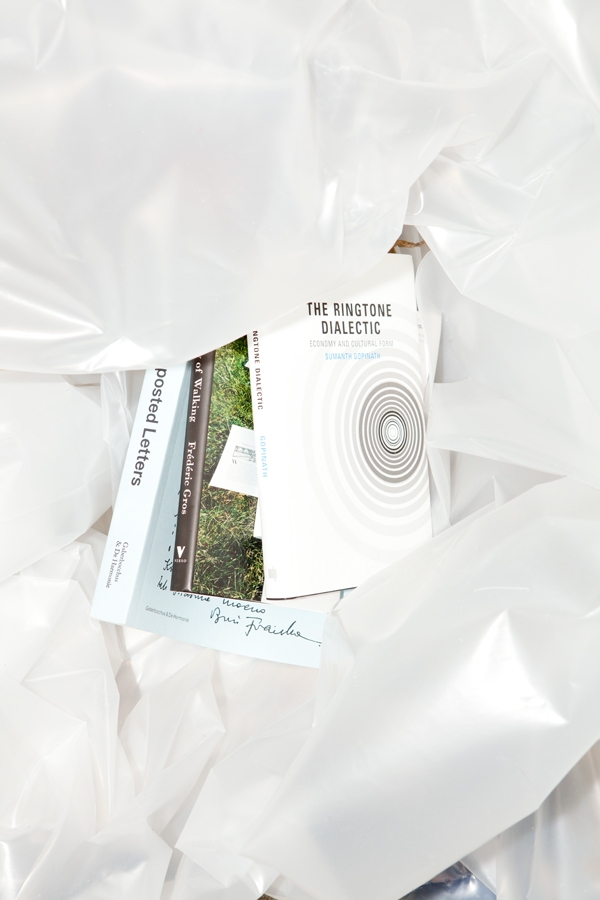Born to two musician parents and classically trained on the piano from a young age, keyboardist and composer Martin Plante rose to prominence in the 1980s with the Canadian rock group Bundock before going on to work with Cirque du Soleil and several acclaimed international ballet companies. But such are the vicissitudes of the early-twenty-first century music industry that for several years in the mid-2000s, Plante’s most consistent paying gig came from composing monophonic ringtones for the ad-supported website about.com.
Nor was he alone. With estimates from 2007 putting a multibillion dollar value on the global ringtone industry, record companies for a time found themselves seriously contemplating the surreal prospect that the once humble ringer could be just the thing to rescue an ailing music business from the brink of financial ruin. That the first death knells of the paid ringtone market were already being sounded when those figures were minted and that within a year that market had entered a seemingly irreversible decline marks the era dubbed ‘the ringtone conjuncture’ by Sumanth Gopinath, a period roughly bounded by the dot-com bubble of the late 1990s and the financial crisis of the late 00s, as an epoch sufficiently discrete for historical study.
Hence the timely arrival of the present volume by Minnesota University professor Gopinath, a Marxist and Yale graduate who has previously published articles on minstrelsy in the music of Steve Reich and the techno-social lineages of the Nike+ sport kit. Written on leave from Minnesota’s School of Music, Gopinath’s discourse ranges freely from economic and sociological analysis to the close reading of scored transcriptions of individual ringtones. With a certain dry humour mixed with the arch tones of mild scholarly disdain, reading Gopinath on ‘the degraded pre-adolescent utopias’ of the Crazy Frog tune can be a little like reading Glenn Gould blithely discussing the ‘harmonic primitivism’ of the Beatles. Nonetheless, this unique and often fascinating volume unearths a sufficient number of intriguing artistic responses to suggest that there may have been more to the ringtone as cultural form than Für Elise rendered in coarse FM synthesis and dididing ding bing bing.
This unique and often fascinating volume unearths a sufficient number of intriguing artistic responses to suggest that there may have been more to the ringtone as cultural form than Für Elise rendered in coarse FM synthesis and dididing ding bing bing
The eventual ubiquity of a Swedish teenager’s imitation of a two-stroke moped engine applied to an ambiguously genitalled cartoon frog may finally have exhausted what little patience the consuming public had for overpriced novelty call alerts. Meanwhile, Salvatore Sciarrino incorporated the (in)famous Nokia Tune into his Archeologia del Telefono (2005); artists like Peter Hrubesch, Dirk Scherkowski and Golan Levin produced interactive ringtonethemed installations; and Touch records released an album of avant-garde ringtones produced by the likes of Ryoji Ikeda, Phill Niblock and Gilbert & George. If Gopinath is sufficiently astute to recognise that the more ambitious works of ringtone media art tend perilously close to glib marketing exercises, he is equally attuned to the genuinely emancipatory potential released by the mass prevalence of mobile sound-producing devices when appropriated by political mass movements.
It was in the Philippines, in the summer of 2005, that the hitherto untapped power of the ringtone was unleashed when a recording of President Gloria Macapagal-Arroyo apparently conspiring to rig the forthcoming election was released, first to a press conference and later cut, spliced, uploaded and shared widely on the net. “Hello Garci,” the recording began, as Arroya affectionately addressed elections commission official Virgillio Garcillano. Before long “Hello Garci” had usurped “Hello Moto”, usually backed by a sample from 50 Cent’s In Da Club (2003). The irony is that Arroyo had swept to power in 2001 backed by the young, tech savvy members of ‘Generation Txt’, for whom political organisation by SMS was second nature. But he who lives by the phone shall die by the phone. At least 30 variants of the Hello Garci ringtone were produced, and downloaded over a million times. Heard at angry press conferences and public protests, the sound was apparently instrumental in bringing about impeachment proceedings against Arroyo.
If ever the ringtone had its ‘utopian’ moment, that moment surely has now passed. But in holding a lens to this most curious of fads, wherein for a brief time content providers could charge 200 to 300 times the price of a song for just a brief electronically whistled rendition of it, Gopinath reveals something of the curious alignment of music, technology, aesthetics and economics in the present capitalist conjuncture that remains as relevant today as it was when Nokia’s then vice president Lauri Kivinen programmed an old nineteenth-century waltz into his handset and became the first person to know that diddy-dee-deediddy-dee-dee-diddy-dee-dee-dee meant that someone wanted to talk to him.
This article was first published in the April 2014 issue
